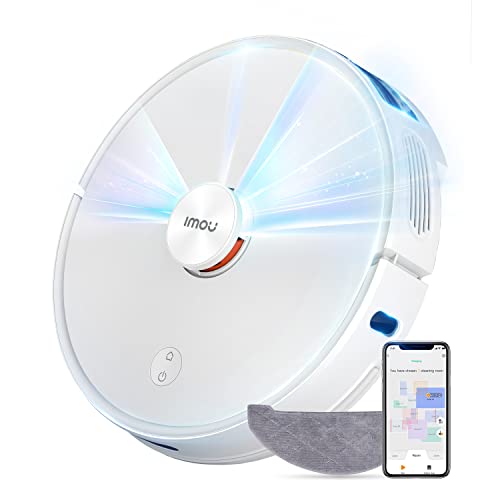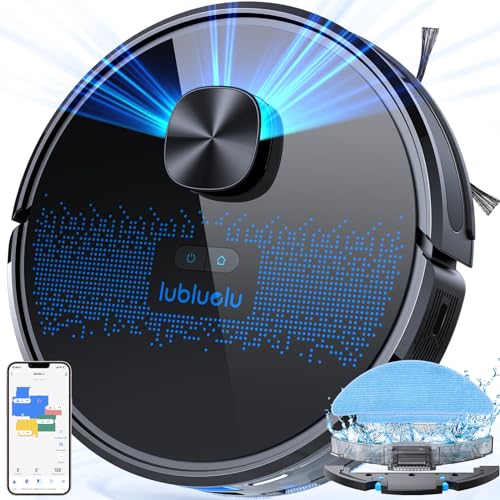10 Websites To Help You Be A Pro In Robot Vacuum Lidar
페이지 정보
작성자 Ilene Marron 댓글 0건 조회 61회 작성일 24-08-25 22:11본문
 Lidar Mapping and Lidar Mapping in Robot Vacuum Cleaners
Lidar Mapping and Lidar Mapping in Robot Vacuum CleanersLidar beams a laser in the room to detect reflections of surfaces and obstructions. This creates a map that's continuously updated. This information aids a robot navigate and avoid collisions.
A mapping robot vacuum also adjusts its cleaning patterns based on the learned floor plan, optimizing each cleaning session to maximize efficiency.
Object Detection
Robot vacuums are equipped with a range of sensors and systems that let them navigate through your home. These include LIDAR cameras and camera systems. Lidar (Light Detection and Ranging) makes use of laser beams to measure distances and for creating a 3D-based map of the environment. It utilizes time of flight to determine the length of time it takes for each beam to be hit and returned from objects within the space. This gives the robot a clear view of its surroundings.
The robot makes use of this information to determine its location and design the best route to avoid obstacles. Lidar's accuracy and precision makes it more effective in navigation and avoidance of obstacles than other mapping technologies such as cameras. It can also be augmented with other data such as the tilt of the floor to aid in navigation.
Object recognition is a different feature that assists robots in avoiding collisions with small items and other objects. It can identify an array of objects such as socks, shoes and pet waste and determine their size and location to ensure that the robot doesn't get them in the way or drag them. Unlike obstacle avoidance systems that rely on mechanical or ultrasonic sensor, object recognition can detect objects in low light, and also detect transparent or reflective objects.
Traditional robotic vacuums depend on cameras to spot furniture, walls and other big obstacles, but they can overlook smaller things such as cables or wires. Robot vacuums with LIDAR and object detection can avoid these obstacles more easily, so they can get to the areas you'd like to clean quicker.
Some models have a dedicated button that lets you set virtual walls and boundaries which help the robot avoid specific objects or areas you don't want it touch. This is a great method to protect delicate objects such as guitars and vase. This functionality is available on most robots that use LIDAR, but it's not as widespread on camera-based systems.
It's important that you know that Lidar, while a powerful mapping technology and navigation tool however, is not completely safe from hacking. A new attack using acoustics called LidarPhone is able to exploit the lidar sensor on popular robots such as the Xiaomi Roborock, among others. Researchers analyzed the ARM Cortex-M firmware that these devices run and exploited a flaw in the Dustcloud software stack to gain root access. They were capable of recording spoken numbers and music with an average of 91 percent accuracy.
Mapping
A robot vacuum uses mapping to create a digital map of the house or room. It accomplishes this by sending out a laser beam that scans its surroundings several times per second, creating an internal map of each space. It then uses this map to navigate its home more efficiently and ensure that every space is cleaned. Mapping technology is more precise than gyroscopes and cameras-based navigation systems.
A robot vacuum that has an integrated mapping system will typically do better job of cleaning than one that doesn't. This is due to the fact that it can move more efficiently throughout the room instead of wandering around the room, or getting stuck in corners. It is also able to avoid obstacles more efficiently and recognize invisible objects such as cables and cords.
Lidar is a common kind of mapping technology that is used in robot vacuums. It uses a combination of sensors to sense distance and direction, as well as the ability to see through walls. Lidar sensors are a bit more expensive than gyroscopes or cameras, but they offer superior performance and accuracy. They are also less affected by changes in lighting conditions, and can operate better with reflective or transparent surfaces than cameras.
SLAM (Simultaneous Localization and Mapping) is a different popular mapping technology for robot vacuums. This technique blends data from cameras and gyroscopes in order to enable the robot to determine its location in a space, and create a detailed map of the surrounding. This enables the robot to maneuver around obstacles accurately and plan efficient cleaning routes. This reduces the number passes required to complete a task.
Compared to mapping systems that use only gyroscopes, robotics that use SLAM are less likely to be stuck or crash into objects. They can also perform various tasks at once, such as mopping and sweeping, and they can create virtual no-go zones that prevent them from entering areas where you do not want them to. This is particularly useful in homes with children or pets. You can also keep the robot from areas with electrical cords or other items that are fragile.
Distance Measurement
To allow robot vacuum cleaners to perform their tasks efficiently, they need to know where obstacles are. The lidar technology (Light Detection & Ranging) is an important advancement in the field that allows robot vacuum cleaners to create precise maps that aid in navigation.
Lidar sensors emit lasers that bounce off objects in the space, and then return to the sensor. The time of flight is used to determine the distance. This allows the sensor to build a real-time map of the rooms' surfaces, including furniture, walls, and other obstacles. The information is fed to the robot's navigation system. This allows the robot to avoid collisions and take the most efficient cleaning paths for maximum efficiency.
Contrary to earlier, less expensive robots that relied on bumpers or infrared sensors. The latest models equipped with Lidar technology can look over the entire floor and identify even the smallest obstacles. This allows the robots to design efficient cleaning routes that cover every inch of your home, eliminating any missed or repeated areas. The ECOVACS HOME App can also show the entire room map and let you choose particular areas that require extra attention.
Lidar-equipped vacuums have many advantages however they are more expensive than those which use simpler navigation systems. The good news is that ongoing technical advancements should eventually lower the price of Lidar sensors and make this feature accessible to a wider user base.
A recent study has revealed that hackers can exploit the lidar sensors on robot vacuum robot with lidar cleaners to listen conversations with private conversations and steal sensitive information, like credit card numbers, or personal data. The researchers created a specialized device that utilised the lidar readings to record audio signals. The researchers then processed the data to analyze patterns of sound and reveal private conversations, without the owner's knowledge.
Although this attack is in the early stages, it highlights the vulnerabilities in security protocols that are currently in use for smart devices. It's crucial for users to remain informed of the latest security updates and keep their robot vacuums current.
Navigation
Lidar, when combined with SLAM navigation in robot vacuum cleaner with lidar vacuum cleaners, has revolutionized the way these automated cleaning devices are able to map and navigate through spaces. This system is more efficient, precise and adaptable to changing conditions than previous technologies. It has opened new possibilities for robots that are household assistants.
LiDAR works by emitting laser beams and measuring the amount of time it takes for them to hit an object and then return. The sensor can then build an exact map of objects and surfaces in the room in real-time. This information allows the robot to identify precisely the shape and position and to plan its path around them.
This is a more precise method than cameras that are easily fooled, as an example, by similar colours and textures. They are also less efficient at night. In addition to mapping, Lidar also enables the robot to know its own location within the space which is a vital element in determining efficient routes and avoiding collisions.
The cheapest robot vacuum with lidar [Read the Full Piece of writing] will then use this information to determine the most efficient route to take to thoroughly clean your home, ensuring that it covers all areas that require cleaning without wasting energy or getting stuck. It is also able to detect if there are stairs or other obstacles that need to be avoided.
The most effective robot vacuums that make use of SLAM and Lidar are those that combine both technologies to give the most precise navigation available. You can determine if a machine is using SLAM by looking at its navigation, because it tends to move in straight, logical lines and adheres to corners and edges with ease. This is in stark contrast to older technologies that used to have more random navigation patterns that ping-ponged from one obstacle to another.
A few simpler robots might utilize gyroscopes to navigate, which work by determining the direction and speed of the wheels' rotation. This is an old-fashioned and tested method that is also found in aircraft, cars and phones, and it can be extremely effective in keeping the robot from bumping into things and creating an initial map of space. It's not as precise and reliable as some other systems, and may not work in large homes.

댓글목록
등록된 댓글이 없습니다.
